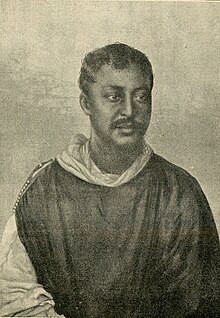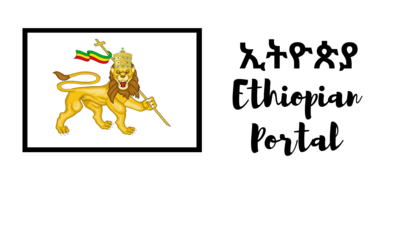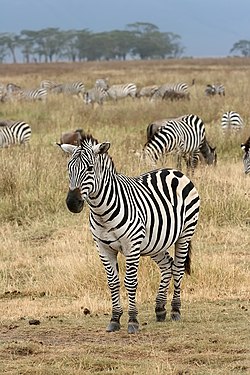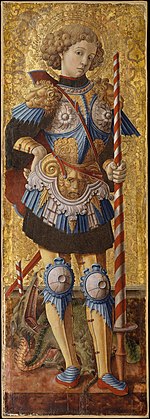Introduction
Federal Democratic Republic of Ethiopia የኢትዮጵያ ፌደራላዊ ዴሞክራሲያዊ ሪፐብሊክ (Amharic) | |
|---|---|
| Anthem: ወደፊት ገስግሺ ፣ ውድ እናት ኢትዮጵያ (English: "March Forward, Dear Mother Ethiopia") | |
 | |
| ISO 3166 code | ET |
Ethiopia, officially the Federal Democratic Republic of Ethiopia, is a tropical country located in the Horn of Africa region of East Africa. It shares borders with Eritrea to the north, Djibouti to the northeast, Somalia to the Northeast, East and Southeast, Kenya to the South, South Sudan to the West, and Sudan to the Northwest. Ethiopia covers a land area of 1,112,000 square kilometres (472,000 sq. miles). , it is home to around 128 million inhabitants, making it the 13th-most populous country in the world, the 2nd-most populous in Africa after Nigeria, and the most populated landlocked country on Earth. The national capital and largest city, Addis Ababa, lies several kilometres west of the East African Rift that splits the country into the African and Somali tectonic plates.
Anatomically modern humans emerged from modern-day Ethiopia and set out for the Near East and elsewhere in the Middle Paleolithic period. Southwestern Ethiopia has been proposed as a possible homeland of the Afroasiatic language family. In 980 BC, the Kingdom of D'mt extended its realm over Eritrea and the northern region of Ethiopia, while the Kingdom of Aksum maintained a unified civilization in the region for 900 years. Christianity was embraced by the kingdom in 330, and Islam arrived by the first Hijra in 615. After the collapse of Aksum in 960, the Zagwe dynasty ruled the north-central parts of Ethiopia until being overthrown by Yekuno Amlak in 1270, inaugurating the Ethiopian Empire and the Solomonic dynasty, claimed descent from the biblical Solomon and Queen of Sheba under their son Menelik I. By the 14th century, the empire had grown in prestige through territorial expansion and fighting against adjacent territories; most notably, the Ethiopian–Adal War (1529–1543) contributed to fragmentation of the empire, which ultimately fell under a decentralization known as Zemene Mesafint in the mid-18th century. Emperor Tewodros II ended Zemene Mesafint at the beginning of his reign in 1855, marking the reunification and modernization of Ethiopia. (Full article...)
Selected article -
The Ethiopian invasion of Somalia', also known as the Ethiopian occupation of Somalia ' or the Ethiopian intervention in the Somali Civil War, was an armed conflict that lasted from late 2006 to early 2009. It began when military forces from Ethiopia, supported by the United States, invaded Somalia to depose the Islamic Courts Union (ICU) and install the Transitional Federal Government (TFG). The conflict continued after the invasion when an anti-Ethiopian insurgency emerged and rapidly escalated. During 2007 and 2008, the insurgency recaptured the majority of territory lost by the ICU.
Ethiopian military involvement began in response to the rising power of the Islamic Courts Union, which operated as the de facto government in the majority of southern Somalia by late 2006. In order to reinforce the weak Ethiopian backed TFG, troops from the Ethiopian National Defence Force (ENDF) began deploying into Somalia during June 2006. Six months later during December 2006 the combined ENDF/TFG coalition, alongside a covert US military contingent, launched a full-scale invasion to topple the Islamic Courts. The ICU's organizational structure disintegrated, ENDF/TFG forces entered Mogadishu in the last days of December. In early 2007 an insurgency began, centered on a loose coalition of Islamic Courts loyalists, volunteers, clan militias, and various Islamist factions, of which Al-Shabaab eventually assumed a pivotal role. In the same period, the African Union (AU) established the AMISOM peacekeeping operation, sending thousands of troops to Somalia to bolster the besieged TFG and ENDF. The Alliance for the Re-liberation of Somalia (ARS), the successor to the ICU, further incited Islamist rebels and participated in the fighting. (Full article...)Selected biography -

Ras Mengesha Yohannes (Tigrinya: መንገሻ ዮሓንስ; 1868 – 1906) was governor of Tigray and a son of Emperor Yohannes IV (r. 1872-89). His mother was Welette Tekle Haymanot wife of dejazmach Gugsa Mercha. Ras Araya Selassie Yohannes was his younger half brother. Prior to the Battle of Metemma, Mengesha Yohannes was considered to be a nephew of Emperor Yohannes IV. During the battle, the Emperor was mortally wounded and it was on his deathbed that Mengesha Yohannes was acknowledged as his "natural" son and designated as his heir. This created something of a succession problem.
Fighting between various relatives of the slain Emperor split his camp and prevented Mengesha from making a viable bid for the Imperial throne. Instead, the throne was assumed by Negus Menelik of Shewa. Ras Mengesha refused to submit to Menelik and later even flirted with joining the new Italian colony of Eritrea. He hoped that the Italians would support his rebellion against Emperor Menelik. However, encroachments by the Italians into his native Tigray, their previous enmity to his father Yohannes, and recognition that the ultimate goal of the Italians was to conquer Ethiopia themselves, led Mengesha Yohannes to finally submit to Menelik II. On 2 June 1894, he and his three major lieutenants went to the new capital at Addis Ababa. Within the newly constructed reception hall of the Grand Palace, the Emperor awaited them. He was seated on his throne with a large crown on his head. Mengesha Yohannes and his lieutenants each carried a rock of submission on his shoulder. They approached, prostrated themselves, and asked for forgiveness. Menelik simply declared them pardoned. (Full article...)General images -
Related portals
Geography
Countries
WikiProjects
Main WikiProject
Related WikiProjects
Africa • Countries • Eritrea • African military history task force
Things you can do
- Visit the Ethiopian Wikipedians' notice board.
- The noticeboard is the central forum for information and discussion on editing related to Ethiopia.
- Comment at the Ethiopian deletion sorting page.
- This page lists deletion discussions on topics relating to Ethiopia
Selected pictures
Did you know -

- ... that the government of Ethiopia's SNNP Region supported local governments calling for a referendum to secede from the region?
- ... that medieval Ethiopian kings claimed to be descended from Solomon?
- ... that Tsadkan Gebretensae, one of the top commanders of Tigray forces in the conflict against the Ethiopian government, previously served as chief of staff of the Ethiopian National Defense Force?
- ... that Liberian paramount chief Tamba Taylor worked as a tailor and claimed to have sewn clothes for Ethiopian emperor Haile Selassie and Ghanaian president Kwame Nkrumah?
- ... that Quintin Johnstone advocated giving control of an American-governed law school to native Ethiopians?
- ... that Aguil Chut-Deng took 22 child refugees from South Sudan to Ethiopia during civil war so that they could attend school?
In the news
Categories
Topics
Other Ethiopia-connected Wikipedias
Wikimedia
The following Wikimedia Foundation sister projects provide more on this subject:
-
Commons
Free media repository -
Wikibooks
Free textbooks and manuals -
Wikidata
Free knowledge base -
Wikinews
Free-content news -
Wikiquote
Collection of quotations -
Wikisource
Free-content library -
Wikiversity
Free learning tools -
Wikivoyage
Free travel guide -
Wiktionary
Dictionary and thesaurus
Other portals



































































